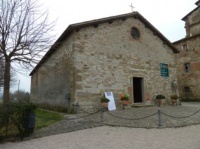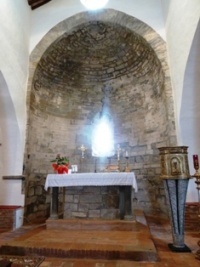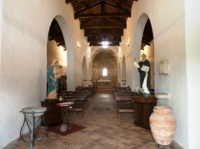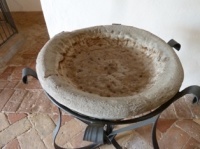La Badia di San Cassiano

 L’abbazia dei santi Cassiano e Ippolito, più conosciuta come Badia di San Cassiano, è un antico monastero di benedettini neri (cosi detti perché indossavano un saio nero) situata lungo la vecchia strada che porta a Trestina, in prossimità della frazione di Verna.
L’abbazia dei santi Cassiano e Ippolito, più conosciuta come Badia di San Cassiano, è un antico monastero di benedettini neri (cosi detti perché indossavano un saio nero) situata lungo la vecchia strada che porta a Trestina, in prossimità della frazione di Verna.
Si tratta di una chiesa risalente all’XI secolo dall’architettura tipicamente romanica. Le prime notizie conosciute risalgono ad una Bolla che papa Onorio II, nel 1126, diresse al vescovo tifernate Ranieri, per assicurargli tutela e protezione.
Nel 1139 San Cassiano passò alla congregazione camaldolese di Fonte Avellana e tale unione venne riconfermata nel 1218 dal papa Onorio III.

 Papa Innocenzo III, nel 1207, assicurò al vescovo Giovanni che l'Abbazia di San Cassiano rimaneva sotto la giurisdizione della diocesi tifernate. Era consuetudine, nel tredicesimo secolo, che in questo monastero si fermasse il nuovo vescovo di Città di Castello, venendo da Roma, per prepararsi a fare il pubblico ingresso in città. Fu così che il procuratore del nuovo presule Giacomo, il 9 maggio 1280, avvisò l'abate del Monastero di S. Cassiano di ricevere il vescovo "ex consuetudine" con tutta la sua famiglia. L'abate rispose che era pronto a "tractare et procurare, ut ex consuetudine debet et tenetur". Infatti l'abate e i monaci accolsero il vescovo con la croce, l'incenso, l'acqua benedetta, tra una folla di popolo festante.
Papa Innocenzo III, nel 1207, assicurò al vescovo Giovanni che l'Abbazia di San Cassiano rimaneva sotto la giurisdizione della diocesi tifernate. Era consuetudine, nel tredicesimo secolo, che in questo monastero si fermasse il nuovo vescovo di Città di Castello, venendo da Roma, per prepararsi a fare il pubblico ingresso in città. Fu così che il procuratore del nuovo presule Giacomo, il 9 maggio 1280, avvisò l'abate del Monastero di S. Cassiano di ricevere il vescovo "ex consuetudine" con tutta la sua famiglia. L'abate rispose che era pronto a "tractare et procurare, ut ex consuetudine debet et tenetur". Infatti l'abate e i monaci accolsero il vescovo con la croce, l'incenso, l'acqua benedetta, tra una folla di popolo festante.
La badia è in buono stato di conservazione essendo stata ristrutturata in tempi recenti ma non è aperta al pubblico, se non in occasioni speciali (come le “Giornate Fai di Primavera” del marzo 2015).
"Giornate Fai di Primavera" 2015 - Visita alla Badia di S. Cassiano
* * *
The abbey of Saints Cassiano and Ippolito, better known as the Abbey of San Cassiano, is an ancient Benedictine monastery of blacks (so called because they wore a black habit) located along the old road to Trestina, near the hamlet of Verna.
It is a church dating from the eleventh century Romanesque architecture typical. The earliest records date back to a known bull that Pope Honorius II, in 1126, went to the bishop tifernate Ranieri, to assure protection and protection.
In 1139 San Cassiano passed to the congregation Camaldolese of Fonte Avellana and this union was confirmed in 1218 by Pope Honorius III.
Pope Innocent III, in 1207, the bishop assured John that the Abbey of San Cassiano remained under the jurisdiction of the diocese tifernate. It was customary, in the thirteenth century, which in this monastery to stop the new bishop of Città di Castello, coming from Rome, to prepare to make the public entrance to the city. So it was that the prosecutor of the new bishop James, May 9, 1280, warned the abbot of the Monastery of St. Cassian to receive the bishop "former habit" with his entire family. The abbot replied that he was ready to "tractare et procure, ut ex customary debet et tenetur". In fact, the abbot and monks welcomed the bishop with the cross, incense, holy water, among a crowd of people cheering.
The abbey is in good condition having been renovated in recent times but it is not open to the public, except on special occasions (such as the "Days Make Spring" of March
